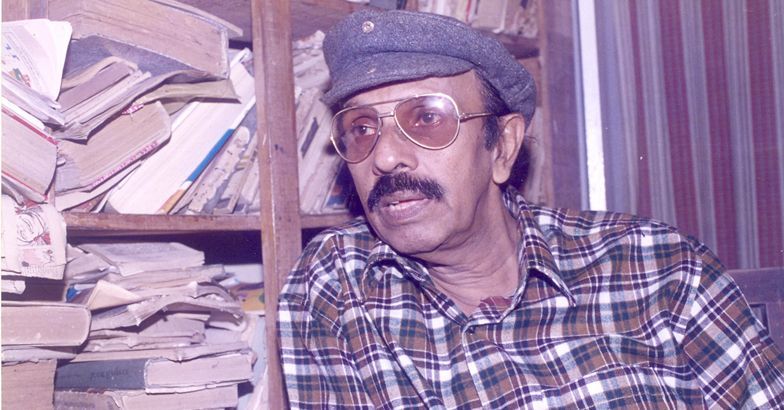Kottayam: Estimating the number of Keralites who grew up on a steady diet of Kottayam Pushpanath’s detective fiction could be an impossible task even for Pushparaj, the genius detective created by him who, otherwise, has an answer to everything! But it is beyond dispute that during the 70s and the 80s, his novels never slept in dust and cobwebs on the shelves of libraries in Kerala.
Though Pushpanath’s novels were mostly printed on poor quality paper, bookworms never got enough time to bore through them as readers never let those books languish on library racks. They were high in demand, and as a result, his novels kept coming back with evidence of past readers spread throughout their worn spines, stained or bent pages, and sometimes, carrying comments and scribbling on the first page revealing the suspense.
Pushpanath was a professional writer to the core. He owned two houses, and one of them was reserved for his creative endeavours as he believed that writing was a solitary occupation. A teetotaller, he is known to be an extremely private person. He started writing in the 60s and remained one of the most widely read pulp fiction authors of his generation for decades. Pushpanath has written over 350 novels that featured hundreds of characters. Places from across the world provided the setting to his thrilling and engrossing murder mysteries.
He created a detective character called Pushparaj – a tweaked version of his own name - to solve crimes in stories that took place in India. In novels that were set outside the country, detective Marxin was the protagonist. Another character - Dr. Elizabeth - also appeared in many novels as the latter’s assistant. His narrative tricks were greatly influenced by world famous crime thrillers like the Sherlock Holmes series.
When horror fiction grew in popularity in Kerala in the 80s, Pushpanath tried his hand at that genre too.
How did a school teacher who was born and brought up in a remote village in Kottayam manage to transport his readers to various mysterious places located continents apart through his writings when there were no facilities such as Internet to connect to the world? He was a regular subscriber of the National Geographic magazine, through which he learned about other cultures and people before letting his imaginations run wild. He was well aware of the fact that his readers, mostly laymen, do not look for logical explanation in his novels, but they want a narrative that keeps them hooked in awe page after page.
Pushpanath, who had translated Bram Stoker’s Dracula into Malayalam, also written three fictions based on the vampire myth. Beginning from 1922, there were around 60 movie adaptions of Bram Stoker’s Dracula, and he had watched most of them. His Dracula-based novels included Dracula Asiayil (Dracula in Asia), Dracula Brazilil (Dracula in Brazil), Draculayude Makal (The Daughter of Dracula), Drakula Unarunnu (Dracula Awakens), Draculayude Nizhalil (In the Shadow of Dracula), Dracula Veendum Varum (Dracula Returns) etc.
The stories were written with a flair that gripped readers ranging from school-going children to daily-wage labourers.
There is a funny anecdote shared by Pushpanath. While translating Bram Stoker’s Dracula into Malayalam, he sought a friend’s help to write down the text. But every day he would ask Pushpanath to stop the translation work by 5 pm. The reason was that he was so scared after listening to all those gory and violent tales and wanted to reach his home located 3 kilometres away before the fall of night! Pushpanath was certain that if the novel could send thrills of horror down the spines of the translator, it would definitely haunt readers in all the right ways.
The man who presented the Carpathian Mountains and the Transylvanian Plateau in all their charms to Malayali readers and turned brutal crimes into intellectual puzzles, has left the stage, but he will live forever in the hearts and minds of present and future generations through his great works.
Read: Latest Kerala News | Liga leaves a 'tree of memories' for Kerala

























 Though Pushpanath’s novels were mostly printed on poor quality paper, bookworms never got enough time to bore through them as readers never let those books languish on library racks.
Though Pushpanath’s novels were mostly printed on poor quality paper, bookworms never got enough time to bore through them as readers never let those books languish on library racks.